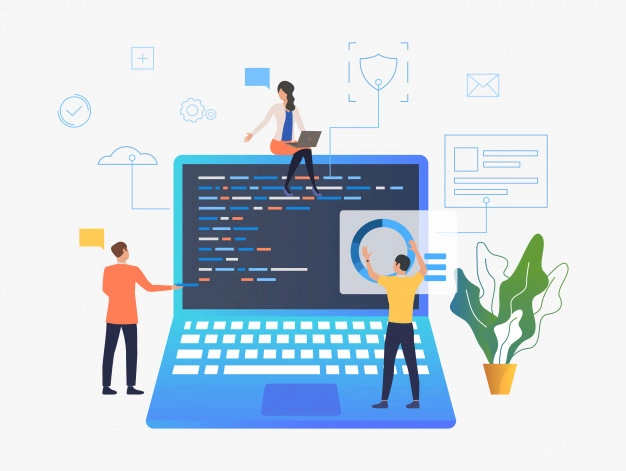
Python and Java are two popular top-level programming languages. As the statistics show, they were among the top-5 coding languages in 2020. Both of them are an excellent solution for almost any project. But what is the difference between them? We answer this question in this article. We are going to compare Java and Python for development thoroughly. This article will be useful for those looking for the most suitable option for their project.
Table of Contents
What is Java?
Java is an object-oriented coding language. It runs on numerous platforms and follows the WORA rule. Its syntax is like other successful coding languages. Java was released in 1995. Its highlight is high operation speed and strict following of syntax rules,
What is Python?
Python is an object-oriented language. It is considered a perfect option for rapid app development because it includes data structures and dynamic typing. The code in Python is reusable, and the system is modular. It was introduced in 1991 to create understandable, logical code for different projects.
Python or Java – What are the main differences?
It is crucial to realize each programming language’s specifics when selecting the best solution for your development project. So, let’s have a closer look at the differences between Java and Python (detailed comparison here).
1. Typing
Java is statistically typed. Python is dynamically typed. It means that if you are a Java developer, defining each variable’s type is a necessity. If you work with Python, it is not obligatory, making the code writing process a little faster.
2. Compilation
Java is a compiled programming language, while Python is interpreted. In the case of Java, a target machine translates the code directly. In Python, the code is translated by the interpreter.
3. Syntax
Java has strict syntax rules. Not following them results in errors and unreadable code. While Python’s syntax is not so strict, and defining the variable types is not a necessity. The only crucial thing is indentation.
4. Developer-friendliness
We can’t say that Java is an elementary language. The code is quite long and statistically typed. However, Python has a much shorter code. Typically, it is 3-5 times more concise than the same code written in Java. This can be explained by Python’s dynamic typing and high-level data types. Python is considered more suitable to learn for beginner programmers.
5. Speed
If to perform a comparison of Python vs. Java, speed is an important criterion. Java is faster, as it is a compiled language. Python being an interpreted language, is not so fast. It also defines the data type at operating time. However, Java programs are slower than Python.
6. Readability
Java is 5 times more verbose than Python. To read from a file in Java, you need 10 code lines. In Python, it is only 2. Python highlights that its codebase is clean and brief. Many developers use Python not to write extra code and build sustainable apps. Java is trying to improve the situation. Each new version has features to make the development process more developer-friendly. But still, reading code in Java is more time-consuming than in Python.
7. Portability
Java applications operate on any computer or other device if it has a JVM. Python is not so portable as it requires an interpreter to translate the code.
8. Performance
Both languages are highly efficient for certain aims. With Python, you don’t waste time on defining variables. With Java, you enhance the development process with the JIT compiler. It is hard to say that one is more efficient than another. Both of them work well for various aims.
9. Database connectivity
Java offers stable connectivity, but Python has weak connectivity. Python isn’t so widely utilized to build business applications.
10. Libraries
Python provides huge, exhaustive standard libraries that help programmers solve common issues. Python offers over 100,000 ready-made packages to choose from. They include a user interface, frameworks, automation tools, etc. Java also has expansive libraries that can assist in fundamental questions. But for now, Python beats Java according to this criterion.
11. Prospects
In recent years there has been an increasing demand for Python. The AI, ML features Python utilizes are cutting-edge and popular in the market. Java is a reliable option tested by time and crowd, so many companies prefer it according to its numerous benefits. Java and Python will be influential game players in the next few years.
The disadvantages of Java and Python for developing
Developers can use both languages for almost any project and build a successful mobile or web app. But let’s pay more attention to the cons of Java and Python for development.
Drawbacks of Java
- Java requires a lot of memory and efficient processing. You need expensive hardware to work with Java.
- No features for garbage control.
- JIT compiler reduces the speed.
- No support for low-level programming.
- Limited GUI features support.
Drawbacks of Python
- Has fewer platforms than Java.
- As an interpreted language, so it is not the fastest option.
- Not suitable for building mobile applications.
- High memory consumption.
- Most code errors appear during the operation time.
Summing up
Now you have a better understanding of web development in Java and Python. We compared them based on the important criteria for programmers and paid attention to each language’s drawbacks. We hope you now have more knowledge to make a wise choice regarding a suitable coding language for your project.
Follow Today Technology for more informative articles.







